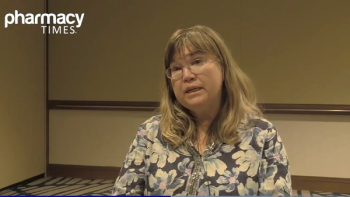
Olaparib Plus Bevacizumab Improves Outcomes in Patients with High-Grade Serous Ovarian Cancer
However, the magnitude of the progression-free survival (PFS) benefit is greatest when surgery achieved complete surgical debulking, specifically in the upfront setting.
Maintenance olaparib plus bevacizumab (BEV) improved outcomes compared with bevacizumab monotherapy in patients with newly diagnosed advanced high-grade serous ovarian cancer (HGOC) regardless of the timing of surgery or residual disease status after surgery, according to a study presented via the Society of Gynecologic Oncology 2020 Annual Meeting on Women’s Cancer. However, the magnitude of the progression-free survival (PFS) benefit is greatest when surgery achieved complete surgical debulking, specifically in the upfront setting.
The objective of the PAOLA-1 study was to evaluate the efficacy of olaparib plus bevacizumab by timing of surgery and presence of residual tumor after surgery.
PAOLA-1 is a randomized, double-blind phase 3 trial in patients with newly diagnosed, FIGO stage 3-5, high-grade serous or endometrioid ovarian, fallopian tube, or primary peritoneal cancer. Patients had received platinum-based chemotherapy plus BEV and were in clinical complete or partial response.
Each patient was randomized to receive olaparib tablets plus bevacizumab or placebo, stratified by first-line treatment outcome and tumor BRCA mutation status. PFS was assessed by investigators and blinded independent central review.
Five hundred and thirty-seven patients were randomized to olaparib plus bevacizumab and 269 to placebo plus bevacizumab, with a median follow-up of 22.9 months. Of these patients, 51% and 42% of patients had upfront and interval surgery, respectively, whereas 60% and 33% had no residual and residual macroscopic disease after surgery, respectively, regardless of timing.
For PFS, HR = 0.52 (95% CI 0.40—0.69, median 29.6 vs 18.2 months [olaparib plus bevacizumab placebo plus bevacizumab]) in patients undergoing upfront surgery; HR = 0.66 (0.50–0.87, median 21.4 vs 16.7 months) in patients undergoing interval surgery; HR = 0.54 (0.42–0.71, median 29.6 vs 19.3 months) in patients with no residual macroscopic disease after cytoreductive surgery; and HR = 0.63 (0.47–0.85, median 18.2 vs 12.9 months) in patients with residual macroscopic disease after cytoreductive surgery.
REFERENCE
Grimm C, Cropet C, Ray-Coquard I. Maintenance olaparib plus bevacizumab (bev) after platinum-based chemotherapy plus bev in patients (pts) with newly diagnosed advanced high-grade ovarian cancer (HGOC): Efficacy by timing of surgery and residual tumor status in the Phase III PAOLA-1 trial. SGO 2020.
Newsletter
Stay informed on drug updates, treatment guidelines, and pharmacy practice trends—subscribe to Pharmacy Times for weekly clinical insights.



















































































































































































































